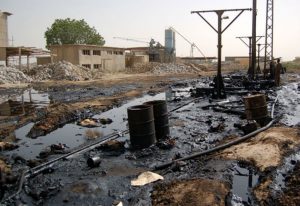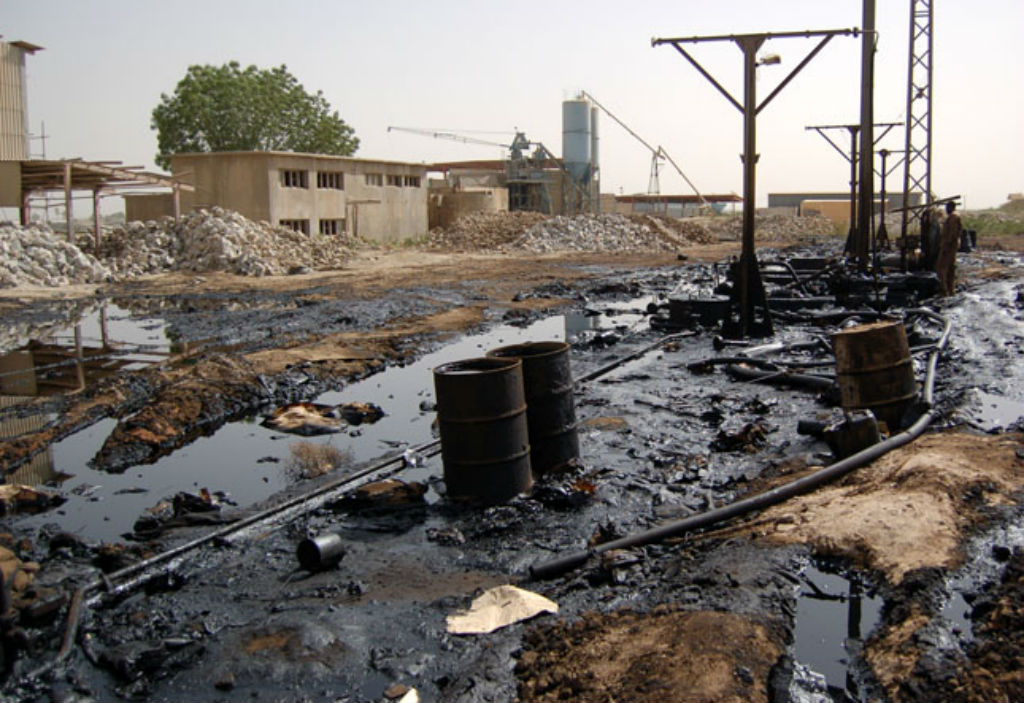
By Peter Reat Gatkuoth
Abstract
January 6, 2020 (SSNA) — “Environment is one of the facets of life that requires utmost attention. The relationship between man (human being) and the environment is one that is reciprocal in a sense that man cannot live without the environment and the environment needs a man to adhere to its conditions so as to have a sustainable environment to live in” (Goodland, 2006). For one to have a lucrative and friendly environment, one has to bridge the gap that creates procedures to follow so as to ensure that an environment is a friendly place for a man to live. The whole notion of environmental law is to create a platform and policies that promulgate an efficient atmosphere for the environment at large. The notion of environmental rights boosts the major aim of environmental law which is to ensure that the environment is a safe place for the man (human being) to live peacefully (Goodland, 2006).
South Sudan is one of the world’s biggest oil exporters and also one of the world’s oil-dependent countries, accounting for almost all oil exports and more than 40% of GDP. The Republic of South Sudan accounts for over 90% of its foreign exchange and more than 90% of environmental and socio-economic degeneration is faced by immediate environmental concern. The frequency of oil spills, however, has a huge environmental impact on the people of former Unity State and the climate as one of the world’s worst-affected areas. While the affected communities are struggling for recognition and justice through appeals, agitation and environmental damage recovery, South Sudan and the oil and gas industries continue to operate and manage the industrial activities in the Oil spill environment to maintain the situation. This paper attempt to look at the effect of oil spills on community subsistence structures and their impact on the resilience of selected communities in Northern Liech territories (part of former Unity State).
Introduction
Due to the wide variety of pipelines, pipelines are typically routed through complex geological settings. In the use of the pipeline transport, there are many uncertainties and risks such as natural factors and human factors. According to estimates, a number of soil corrosions, landslides, floods, fires, mud slides and earthquakes are occurring every year. In addition, human factors such as third-party disruption, incorrect operation and design flaws also endanger the safety of the pipelines. Since pipelines are flammable, leakage of pipelines can cause environmental pollutions and it may perhaps have catastrophic consequences.
The people and government officials face a new pipeline break. The environmental and public safety effects of leaks had huge consequences, two months after the crude oil pipeline broke out in former South Sudan’s United States. The most recently incident in Kailoy was reported to have leaked oil ten kilometers west of the Unity Oil Field. On 21 December 2019, the report indicated that the huge fire happened, burning the leaked oil spills and sending thick smoke plumes into the air for two days. The company is owned by the Chinese Greater Pioneer Operating Corporation (GPOC). Residents of the area expressed their concern over the failure to prevent spills and the absence of fire suppression by oil companies, which residents believed were likely to start from nearby coal producers.
The research indicated that the residents cut down their trees to make charcoal, put them into a heap, add grass and soil on the pile and burn it. After 4 or 5 days of burning, the fire extended as the new year wind blow the fire to the nearby grasses. Kai Paan, resident of Kailoy, felt he had unintentionally brought about the fire by local charcoal producers. “At about 1400 (local time), the fire started and we saw that the wood for [ burning] carbon had begun to break down and that the fire had begun heading to the oil pipeline just 10 kilometers from the Bentiu petrol site,” said Kai Pan in the South Sudan VOA Focus and Northern Liech, on the Sudanese frontier.
Impacts of the Pipeline Fires
The first significant impact of the pipeline fire on the people of the surrounding villages as seen in viral fire videos, is the deterioration of their health. In the interview with reporters, local communities reported cases of airborne diseases, many of which are suspected of being caused by oil fumes in the area after the fire broke out. “The people in this area now have a lot of coughing, and there are also skin problems and eye pain among the inhabitants in this area,” one of the spectators said. He continued to say that petroleum-filled fire is still burning near Kailoy, threatening the community and the environment as whole.
Explosion and fire could lead to loss of life in the same vein of human health. It is not unheard of an explosion in the pipeline that kills the inhabitants of the passes. This could be the case for the people of Bentiu if the matter is not resolved. Oil and petroleum products have many volatile compounds released as gasses into the soil if oil spills occur. After the discharge, this volatile oil substance or vapor, which causes different smells, contaminates the air. Once in the air, pollution will move long distances if the original contamination level is high. While oil contaminants are not detected by vapor, they may come directly into contact with oil and/or oil products on their way through the contaminated areas, develop skin irritations, absorb oil particles from the skin, breathe in the polluted air and develop various diseases even if they do not have a sensation of vapor.
Even if the leakage of the pipeline does not hit the residential area, the people can still be exposed to polluted food and polluted water and such a diseases are not easy treated. This is particularly problematic as residents of any region might be exposed to oil contamination (when they eat food from the affected area) even if living far from the oil spill site. As in Bentiu, where the pipeline passed through agricultural lands, the impact of the pollution is very huge, high and it can affect agriculture products and livestock as well. On the other hand, although there are differences in view on the causes and effects of pipeline explosions on humans, livelihoods and environment, there is little information about the environmental impacts and perception of the victims of such tragic events.
Low understanding of the causes and effects stems from the fact that most of the available materials come from local sources and are often biased. Many environmental elements can be affected by a pipeline spill or fire. The effects can range from mild to serious, depending on the size of the spill or fire and its location. For example, oil spills can have a significant impact on animals and fish’s temporary loss of habitat. Heavy oils can affect multiple organism functions such as breathing, feeding, eye irritations and thermosetting. At the same time, the whole ecosystem can temporarily change due to chemical and environmental-toxic elements of the spilled oil.
Bentiu has an extensive network of river banks and water bodies that provide the civilian population with water and seafood. The explosion and leakage in the Bentiu area has also caused alarming levels of pollution. Oil pollution can vary from one or more gallons of oil spilled to millions or even hundreds of millions of gallons of oil. The term is usually associated with oil spills in coastal waters and oceans. Oil and oil products tend to accumulate on the surface of the water and float on the water, owing to the abundance of water bodies in the region. Small oil droplets may also come in form that can increase the water contact on the surface and the spilled oil’s natural biodegradation. Oil leakage and fire will penetrate underground on the ground and eventually reach the groundwater. These vertical movement, however, may be slowed down if paved roads, natural clay layers or other natural or anthropogenic obstacles do not prevent this. Oil may also pass sideways through less permeable materials (including surface flooring) or underfloor and surface waters.
Apart from noise, residents in the neighbouring villages of the incident are extremely at risk of property harm from fires fuelled by violent winds. When fires occur, ignited gas will send hundreds of feet of flames into the air. Gas explosions may also result in the destruction of private property near the explosion site in addition to causing serious injuries. If an explosion of the pipeline causes fire, burn your home or in any way damages your house, you may be entitled to compensation. Damage to property caused by a major explosion could include the loss of furniture, loss of personal property and belongings, building damage and cost of repair. The amount of fire and pollution only encourages people to migrate because their farm was burned by fire disaster, which was their main source of livelihood. Most farmers have either migrated with their families to urban areas or have found different livelihoods elsewhere.
Conclusion
In understanding the impact of a pipeline explosion on South Sudan’s affected communities through the use of spatial and social survey approaches, this small description note has shown both the human and geographical dimensions. Fundamental problems in disaster management described inadequate pipeline control and social disaster awareness. The pipeline tragedy has shown a strong link between social infrastructure, information and critical infrastructure security. In order to ensure effective security of vital infrastructure and to minimize the frequency of these disasters in a longer-term plan, we believe it is important to enhance connectivity between local communities near to critical infrastructure sites and to strengthen transportation, communications, insurance and medical structures. The paper ends by underlining the various impacts of pipeline oil discharges on communities that require public agencies and associated oil companies to engage in the decision-making process. The involvement of the community will provide insight into the critical needs of the community, which will be integrated into the infrastructure compensation structure/schemes.
References
Goodland, R. (2006). Oil and gas pipelines social and environmental impact assessment: State of the art. Oil, Gas & Energy Law Journal (OGEL), 4(4).
Richardson, Matthew L., Benjamin A. Wilson, Daniel AS Aiuto, Jonquil E. Crosby, Alfonso Alonso, Francisco Dallmeier, and G. Karen Golinski. “A review of the impact of pipelines and power lines on biodiversity and strategies for mitigation.” Biodiversity and Conservation 26, no. 8 (2017): 1801-1815.
Beyer, J., Trannum, H. C., Bakke, T., Hodson, P. V., & Collier, T. K. (2016). Environmental effects of the Deepwater Horizon oil spill: a review. Marine Pollution Bulletin, 110(1), 28-51.

